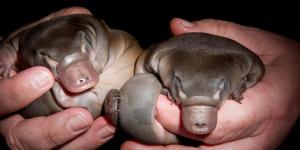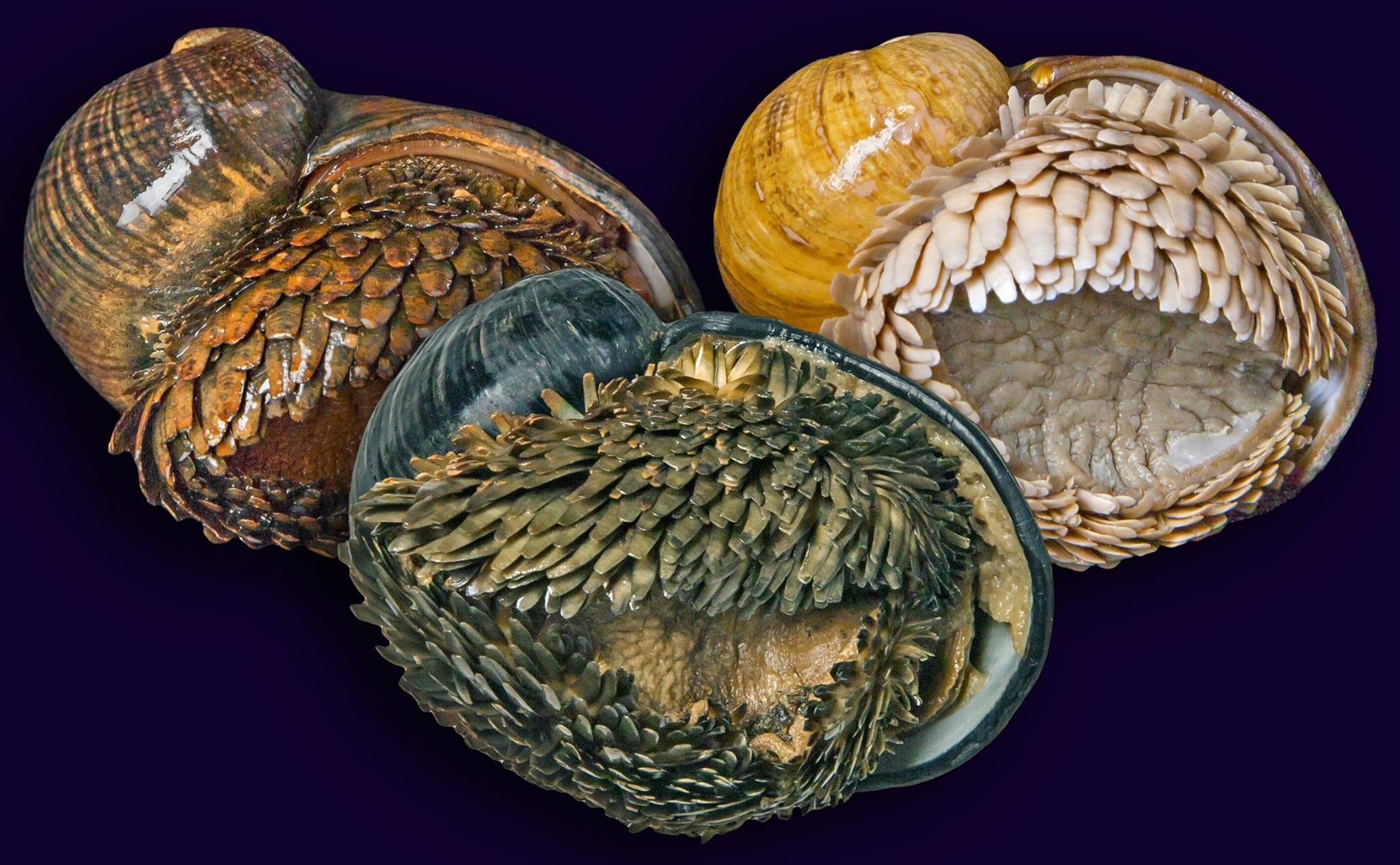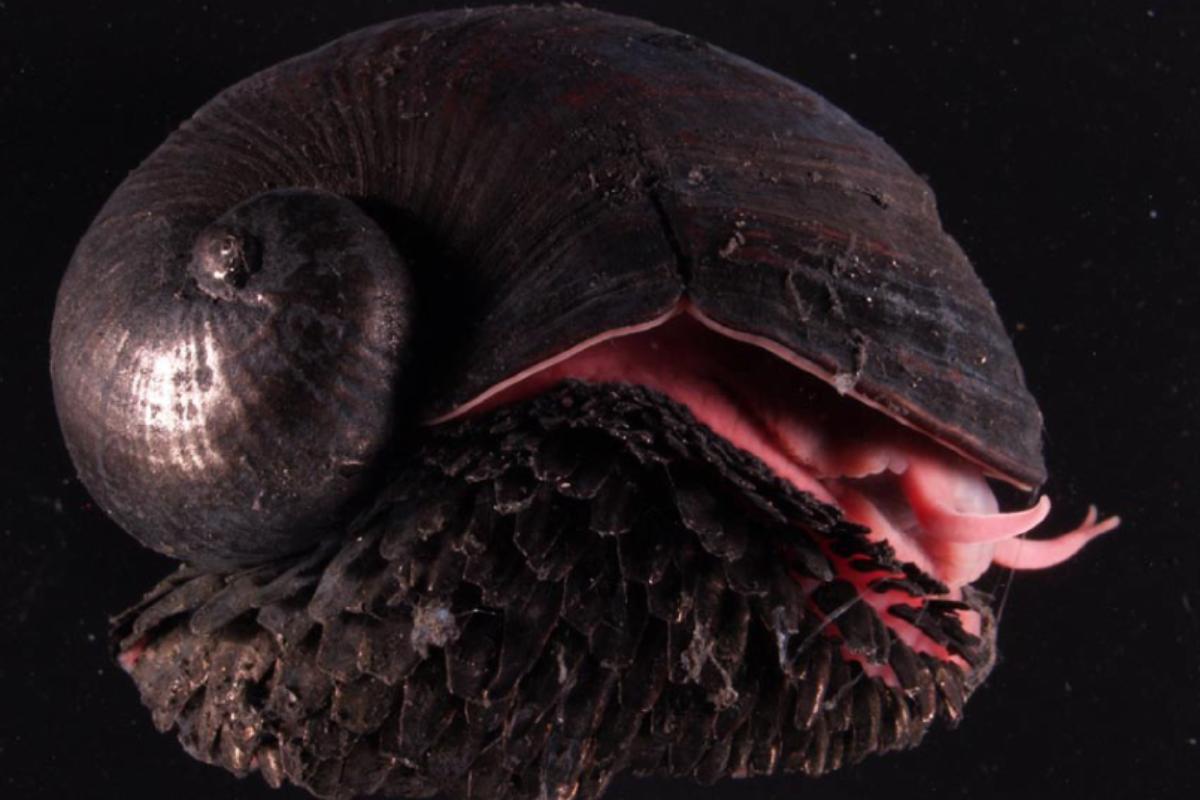Volcano Snail or Scaly-Foot Gastropod


Embark on a fascinating exploration into the world of the volcano snail (Chrysomallon squamiferum), also known as the scaly-foot gastropod. This extraordinary sea snail thrives in diverse underwater volcanic regions. With its unique adaptations and resilient nature, this captivating creature has captured the curiosity of scientists and nature enthusiasts alike.
In the following article from thedailyECO, we unravel the mysteries surrounding the volcano snail or scaly-foot gastropod. Explore the hidden wonders of this animal that thrives in extreme conditions despite all odds.
What is a volcano snail?
The volcano snail or scaly-foot gastropod, scientifically known as Chrysomallon squamiferum, is a remarkable marine gastropod, specifically categorized as an aquatic snail.
One distinguishing feature of the volcano snail is its unique adaptation of having its foot covered by chitinous sclerites arranged in overlapping scales, forming a protective armor against potential predators such as crabs.
While most snails possess a spiral shell made of calcium carbonate for protection, the volcano snail takes it a step further. It has an extraordinary ability to incorporate iron into its exoskeletal structure, resulting in iron sulfide present in both its carapace and foot.
The shell itself consists of three distinct layers that are not fused together. The outermost layer comprises iron sulfide, followed by a soft organic layer acting as a shock absorber, and finally, an inner layer made of calcium carbonate.
In terms of appearance, these snails typically feature a crimson-colored body, while their scales and shell exhibit an obsidian hue. Interestingly, if the snail inhabits an iron-deficient environment, the scales, and shell may exhibit a milky coloration, providing insights into the chemical composition of its watery habitat.
The foot of the volcano snail serves as its base structure, facilitating movement and providing stability. As for size, the diameter of these snails ranges from 3 to 4 centimeters (approximately 1.2 to 1.6 inches).
Fascinating research involving computer simulations in laboratory settings has revealed that the organic layer between the shell's different components primarily absorbs the energy generated during predator attacks or collisions with other organisms. This energy absorption mechanism helps prevent fractures within the shell by effectively dissipating the force of impact.
Regrettably, the Red List of Threatened Species has designated Chrysomallon squamiferum as an endangered species, highlighting the need for conservation efforts to protect its diminishing population.

Where does the volcano snail live?
This remarkable creature thrives in the volcanic hydrothermal vents of the Indian Ocean.
These hydrothermal vents are located at depths exceeding 2 kilometers (1.2 miles) below the ocean surface.
These vents release scorching hot water that reaches temperatures of nearly 399 °C (ca. 750 degrees Fahrenheit). Despite the inhospitable conditions characterized by high pressure, acidity, and limited oxygen, this creature has managed to adapt and find a habitat in which it can flourish.
The specific location and distribution of the volcanic snail within the hydrothermal vent systems are still subjects of ongoing scientific research and exploration.
For a deeper understanding of the volcanic snail's habitat, be sure to explore our articles on the various components of a volcano and the factors contributing to volcanic eruptions.
What does the volcano snail eat?
The volcano snail, Chrysomallon squamiferum, has a unique feeding mechanism because it relies on the thiotrophic bacteria present in its esophagus for sustenance.
Thiotrophic bacteria are a group of microorganisms that are capable of obtaining energy from the oxidation of inorganic sulfur compounds. They have the unique ability to use sulfur as an electron donor in the process of chemosynthesis, which allows them to produce organic molecules and derive energy from this metabolic pathway.
This process is known as chemosynthesis, where the bacteria utilize sulfur from the surrounding environment as an electron donor to perform photosynthesis. The snail obtains its food from these bacteria, which can include sugars and other nutrients.
The relationship between the snail and the thiotrophic bacteria is indeed mutually beneficial and symbiotic. The snail provides a safe habitat for the bacteria to thrive, while the bacteria serve as a food source for the snail. This symbiotic association ensures the snail's nutritional needs are met in its challenging environment.
The scales on the snail's foot are believed to regulate the internal sulfur levels necessary for the growth of thiotrophic bacteria. This is crucial for the snail's nutrition in the volcanic habitat.
Furthermore, the volcano snail has a reduced radula, a specialized feeding structure typically found in snails, as it is no longer needed for scraping up food. Other digestive structures have taken over its function.

How does the volcano snail reproduce?
The volcano snail, also known as the scaly-foot gastropod, exhibits simultaneous hermaphroditism, meaning each individual possesses both male and female reproductive organs.
This unique adaptation allows them to reproduce without the need for a separate partner.
During the mating process, two snails will exchange sperm to fertilize each other's eggs. After fertilization, the eggs are laid and undergo development. Unlike some snail species, the resulting eggs of the volcano snail do not float.
While specific details about their reproductive behaviors and strategies are still being studied, the volcano snail's simultaneous hermaphroditism is a remarkable aspect of their reproductive biology.
Other fun facts about the volcano snail
In addition to the intriguing characteristics we have already discussed, the volcano snail continues to astound with its enigmatic nature and remarkable adaptations. Here are other amazing facts about the volcano snail:
- Volcano snails are simultaneous hermaphrodites, meaning each individual possesses both male and female reproductive organs. This characteristic allows them to reproduce with any other individual of their species they encounter.
- The larval stage of the volcano snail has not been fully defined or discovered. Scientists are still unraveling the mysteries surrounding the early life stages of these unique creatures.
- As juvenile volcano snails transition into adulthood, they undergo noticeable changes. These include a slight reduction in body size, fewer sclerites (scales) on the foot, and a larger operculum (a structure that covers the shell opening) which gradually decreases in size as the snail matures.
- Recent studies have revealed that volcano snails have an exceptionally large single-cardiac heart. Occupying an average of 4% of their total body volume, this robust circulatory system is fortified with lumen-spanning muscle bundles and thick muscular walls.
- Due to the significant presence of iron in their bodies, volcano snails exhibit magnetic properties. This attribute has led to alternative names such as "lava snail" or "iron snail." In fact, you can pick up a volcano snail with a magnet.
- A peculiar characteristic of the volcano snail is the astonishing size of its esophageal gland, surpassing that of its snail counterparts by a thousandfold. This voluminous gland provides sanctuary to the endosymbiotic bacteria responsible for meeting the snail's nutritional requirements.
- Unlike other snails, volcano snails do not have eyes or tentacles.
Volcano snails play a significant role in the study of extremophile organisms and their adaptations to extreme environments. By investigating these unique creatures, scientists hope to gain insights into the potential medicinal properties and adaptations that may be present in hydrothermal vent ecosystems.
If you want to read similar articles to Volcano Snail or Scaly-Foot Gastropod, we recommend you visit our Facts about animals category.
- Sigwart, J., Chen, C. & Thomas, EA (2019) Chrysomallon squamiferum. The IUCN Red List of Threatened Species. Available at: https://www.iucnredlist.org/species/103636217/103636261
- Schulz-Vogt, HN (2011). Thiotrophic Bacteria . In: Reitner, J., Thiel, V. (eds) Encyclopedia of Geobiology. Encyclopedia of Earth Sciences Series. Springer, Dordrecht. https://doi.org/10.1007/978-1-4020-9212-1_206
- Chen, C., Copley, JT, Linse, K. et al. The heart of a dragon: 3D anatomical reconstruction of the 'scaly-foot gastropod' (Mollusca: Gastropoda: Neomphalina) reveals its extraordinary circulatory system. Front Zool 12, 13 (2015). https://doi.org/10.1186/s12983-015-0105-1
- Chong Chen, Katrin Linse, Jonathan T. Copley, Alex D. Rogers, The 'scaly-foot gastropod': a new genus and species of hydrothermal vent-endemic gastropod (Neomphalina: Peltospiridae) from the Indian Ocean, Journal of Molluscan Studies , Volume 81, Issue 3, August 2015, Pages 322–334, https://doi.org/10.1093/mollus/eyv013
- Ulla Rothschuh Osorio (May 12, 2023). volcanic snail. BioEncyclopedia. Available at: https://www.bioenciclopedia.com/caracol-volcanico-910.html







